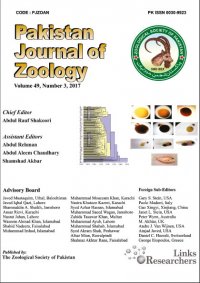Antibiofilm Activity of Proteolytic Enzymes against Salmonella Gallinarum Isolates from Commercial Broiler Chickens
Antibiofilm Activity of Proteolytic Enzymes against Salmonella Gallinarum Isolates from Commercial Broiler Chickens
Iram Liaqat1*, Tahir Hussain1,2, Aisha Waheed Qurashi3, Gulbeena Saleem2, Asia Bibi4, Muhammad Fiaz Qamar5,ShaukatAli1 and Ikram-ul-Haq6
ABSTRACT
To share on other social networks, click on any share button. What are these?










